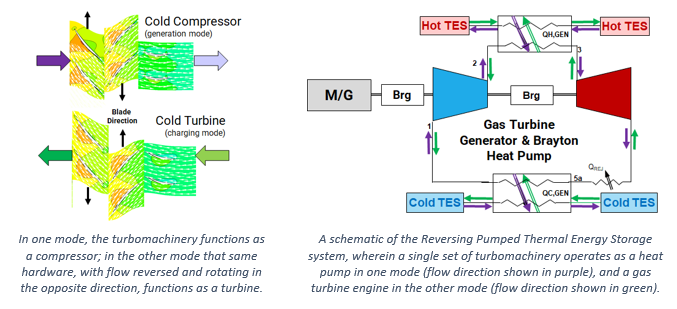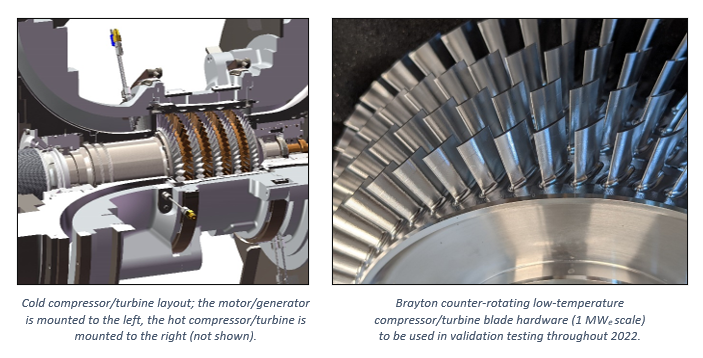With photovoltaic solar panels (PV) being the least expensive way to add new capacity to the electrical grid, the energy sector is eagerly seeking affordable technologies that can take excess power during the day, store it, and then dispatch it after the sun has gone down.
Pumped thermal energy storage (PTES) solutions can use electricity generated by PV during the day to run a heat pump; this system generates heat and stores hot media in one reservoir while removing heat and storing cold media in a second reservoir. When PV is no longer available, those two reservoirs can be used to power a gas turbine engine and generate electricity whenever it is needed. Emerging systems are demonstrating high round-trip efficiencies, maximizing the amount of solar energy that can be delivered when the sun is no longer shining.
An economic obstacle challenging the adoption of this solution is the capital cost associated with two sets of turbomachinery (the heat pump and the gas turbine). Through ARPA-E funding of its “Duration Addition to electricitY Storage” (DAYS) program, Brayton Energy has developed a single counter-rotating (CR) machine (patent-pending) that can operate as both a heat pump AND a gas turbine, halving the cost of the overall system. This is accomplished by (a) replacing stator rows with sets of CR blades and (b) defining near-symmetric blade profiles that can function as both compressor and turbine blades. In charge mode the system uses excess power from the grid to store energy; by reversing its flow and rotational direction, the same hardware can operate in generation mode and produce 50 MWe of electricity to deliver back to the grid.
Brayton is currently validating the design through 1/5-scale hardware testing of its magnetic bearing system, the charge compressor, and the generate turbine. Looking forward, Brayton seeks to test the full-scale rotor at reduced pressure to validate operation and performance of the system at 10 MWe prior to assembling and operating the final full-pressure 50 MWe design.



